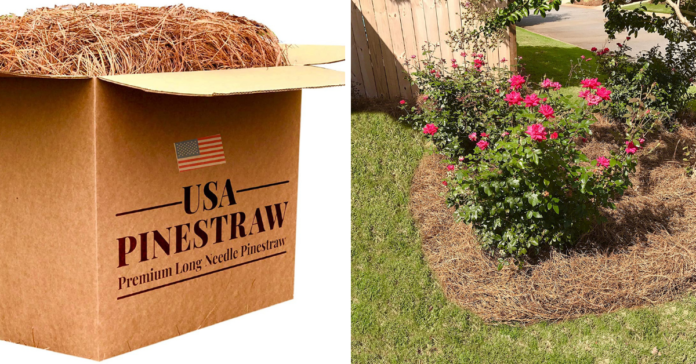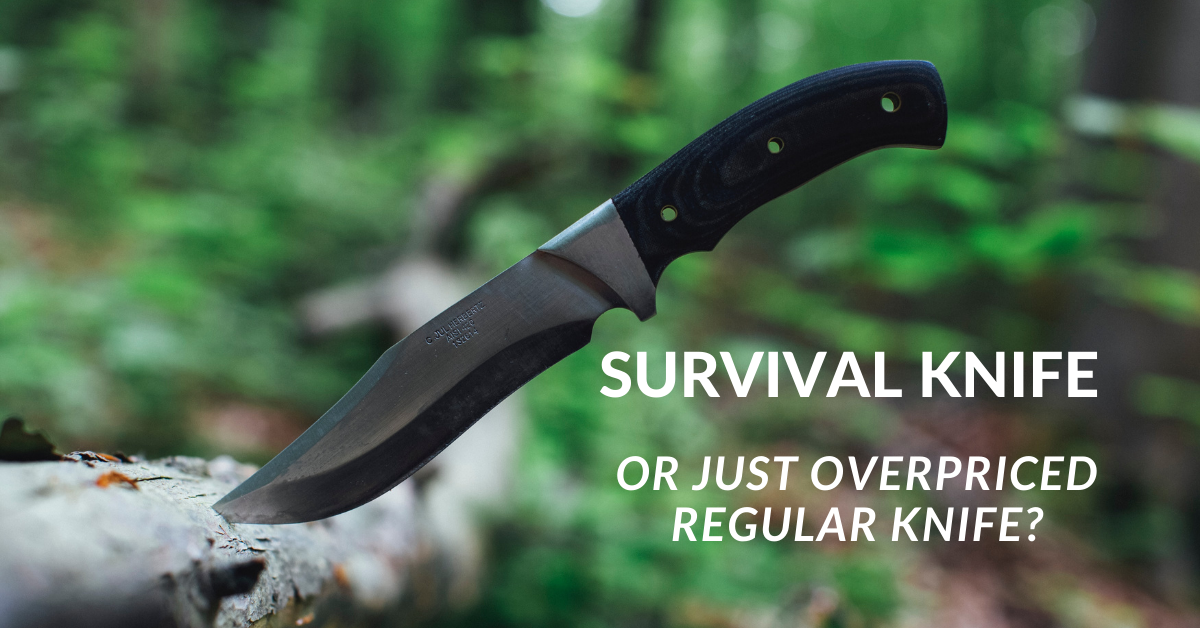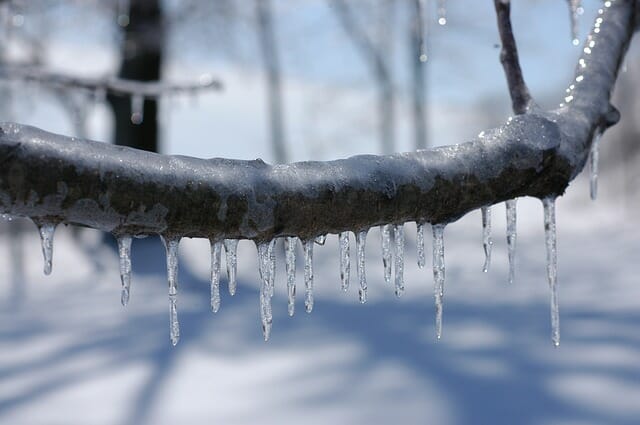Is this your first time you hear about survival garden? You probably are wondering what it is. Simply, it is a garden capable of supplying you and your family with the food necessary for survival scenarios. Besides, you get to enjoy healthy and fresh food supplies right from the background of your home.
However, it is unfortunate that most people are unprepared for a disaster. For instance, with the ongoing health crises of covid-19 that has led to lockdown and closure of primary food supplies, most people are faced with hunger and have to rely on government supplies. However, those with their survival garden enjoy an entire supply of healthy foods from their backyard.
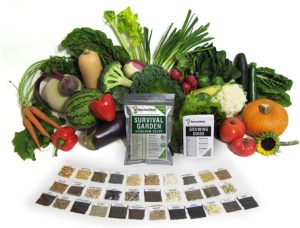
Purchase Non-GMO Survival Garden Vegetable Seeds Here
How big should a survival garden be? The size should not worry you as you can practice survival gardening right on your balcony or in your backyard. What is more important is planning, as you should maximize your space to ensure it can hold all types of foods that will provide your family with a balanced diet.
Let's go through some of the survival garden layout practices necessary for maximum output; from what to plant, when to plant, exposure to sunlight, most appropriate location, having a planting schedule, and more!
Ten Survival Garden Layout Practices
-
Determine what to plant
Before planting anything, it is essential to determine the type of crops you want to grow. As a survival garden, you want it to host lots of different crops as much as possible. Thus, list down all the produce you intend to plant and the amount of space you wish to allocate them. If you have no clue whatsoever, there are seed packets available for setting up a survival garden.
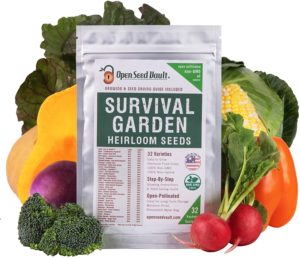
Purchase Non-GMO Survival Garden Vegetable Seeds Here
The space allocation should be based on the amount of produce each crop is capable of yielding. For instance, crops such as potatoes, beans, and tomatoes, should be allocated a smaller space to generate tons of produce in a small area. Also, consider those that can ideally grow together and mix them.
However, as much as you might want to plant lots of crops, you must consider planting in small quantities at first until you get used to operating a garden.
2. Select a suitable planting location
When selecting a survival garden location, consider an area with enough sunlight and soil quality. Some crops, such as tomatoes and onions, require a tremendous deal more sunlight than others. Also, the soil should be of good drainage.
Your survival garden layout should take into consideration the amount of sunlight that it receives, as it directly influences the type of crop to grow. If your area has excellent sunlight, there is no limit to the variety of crops to grow. But if you have limited sunlight, no need to worry; just plant the alternative crop and still enjoy a healthy and regular food supply.
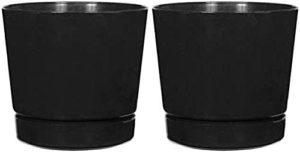
Purchase Full Depth Round Cylinder Pot Here
What soil type is in your prospect gardening location? In most cases, if you are in urban areas, your soil is sandy soil with lots of large gravels. Since such soils have poor draining and are not suitable for farming, you can import clay soils elsewhere until the surface is covered with tons of suitable soil.
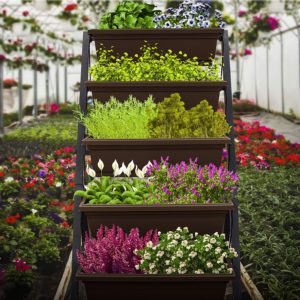
Purchase Vertical Raised Garden Bed Here
If your balcony is your location, you will need to fill your planters with the quality soil necessary for planting.
3. Clear the location
Now that you have determined the location, it is essential to clear the ground. You just need to remove any unnecessary items for the balcony to create room for your plantation pots. If it in your backyard, you need to till the land to remove the weeds. A gardening toolkit can go a long way towards making this task easier and more fun.
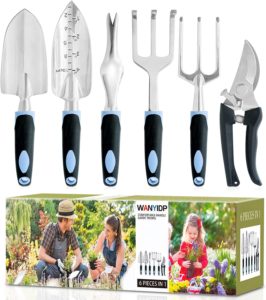
After weeding, add manure and mix it well with the soil. Cover the ground with pure dry grass or newspaper to smother. This survival garden layout practice is essential as it ensures the land remains free of weed and the soil is enriched with manure.
4. Till or dig the land
With a clear piece of land, it is essential to till the ground to facilitate water drainage and proper root penetration. If you are dealing with a large portion of land, you can opt for tilling like a few hectares. The process involves the use of machinery like a rototiller. However, you should be careful not to disturb the microorganisms and earthworms that enrich the soil.
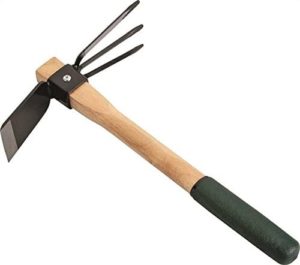
Purchase Edward Tools Hoe and Cultivator Hand Tiller Here
For a small piece of land, digging can be suitable practice. Dig when the soil is a little wet up to twelve inches down to mix it with organic matter.
5. Sketch the garden layout
After preparing the land for planting, it is essential to determine how much space each crop will occupy. Your survival garden layout should take into consideration the amount of sunlight received per section throughout the day; if some parts of your garden receive more sunlight per day than others, consider that as one of your division strategies.
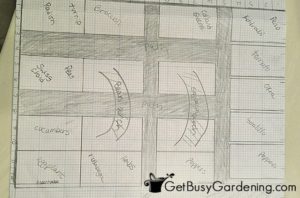
Also, consider companion planting as it is an excellent way of promoting efficiency. For instance, onions and garlic are a great companion for cabbages and broccoli as their strong odor acts as a pest repellant. However, sketching your survival garden layout should be done carefully so as to avoid mixing plants that can result in cross-pollination.
6. Develop a planting schedule
Based on the year's seasons, it is essential to determine what grows best during each season to avoid poor yield. For instance, crops like onions, bell peppers, tomatoes, and radishes require a great deal of sunlight. As such, they are not your suitable crop of choice during winter.
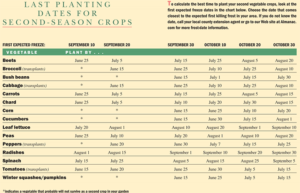
The insight into how each crop performs under different climatic conditions can help make the best out of it.
7. Start planting
Crops such as kales have a high tolerance for cold and are therefore suitable during autumn or late winter. Tomatoes are annual flowers and perform well under warm temperatures. You can plant them during mid-spring or mid-autumn. A gardening toolset with a cultivator, a weeder, and a trowel can be very handy at this stage.
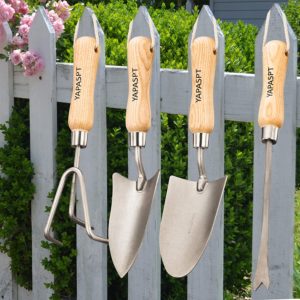
Purchase 4 Piece Heavy Duty Garden Hand Kit Here
It is essential to read the seed description on the packet to understand its best temperatures, depth, spacing, and whether to plant directly or need a nursery bed to grow the seedlings. For the sake of a well-stocked garden, make sure the survival garden layout understands seasons and the plants that are best acclimatized for each season.
8. Watering
After plantation, moisture is necessary for the germination of the seeds. It is essential to water the ground with a hose pipe or watering can if it is not raining. During this stage, watering should be done cautiously to avoid unearthing the seeds or breaking the seedlings before developing strong roots.

Purchase Stainless Steel Metal Water Hose Here
How often does one need to water the garden? This depends on the soil type. If you are dealing with clay no need to water regularly, but for sandy soil, watering should be done daily, especially during windy days as this soil dries very fast.
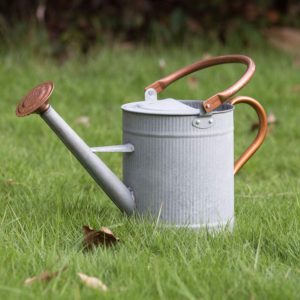
Purchase Galvanized Watering Can Here
9. Maintain the garden free of weed and moist
You can achieve a clean and moist garden through mulching. In this way, you do not have to till the land nor water your crops regularly. The nature of the mulch should depend on the nature of the crop.
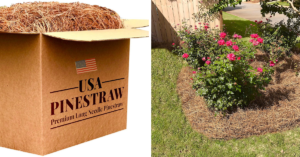
Purchase Long Needle Pine Straw Here
For short-term crops, the mulch should decompose in a few months. You can also buy a Bonsai 100E Japanese small wedding sickle from amazon to remove the weeds manually.
10. Crop rotation
After harvesting, it is essential to plant different crops from what was earlier planted in each seedbed. You can decide to plant beans or any other leguminous plant where you had planted earlier, let say tomatoes or maize. These plants are known to enrich the soil naturally. Thus, you can keep planting throughout the years without the need for commercial fertilizers.
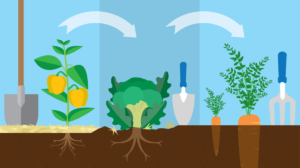
If you are looking forward to planting vegetables, you can access seeds from online shops. On Amazon, you can get non-GMO cabbage seed and organic jarrahdale pumpkin. If you plan on setting up a garden for survival purposes, these tips on the ideal survival garden layout should help! All the best.






